好友关注
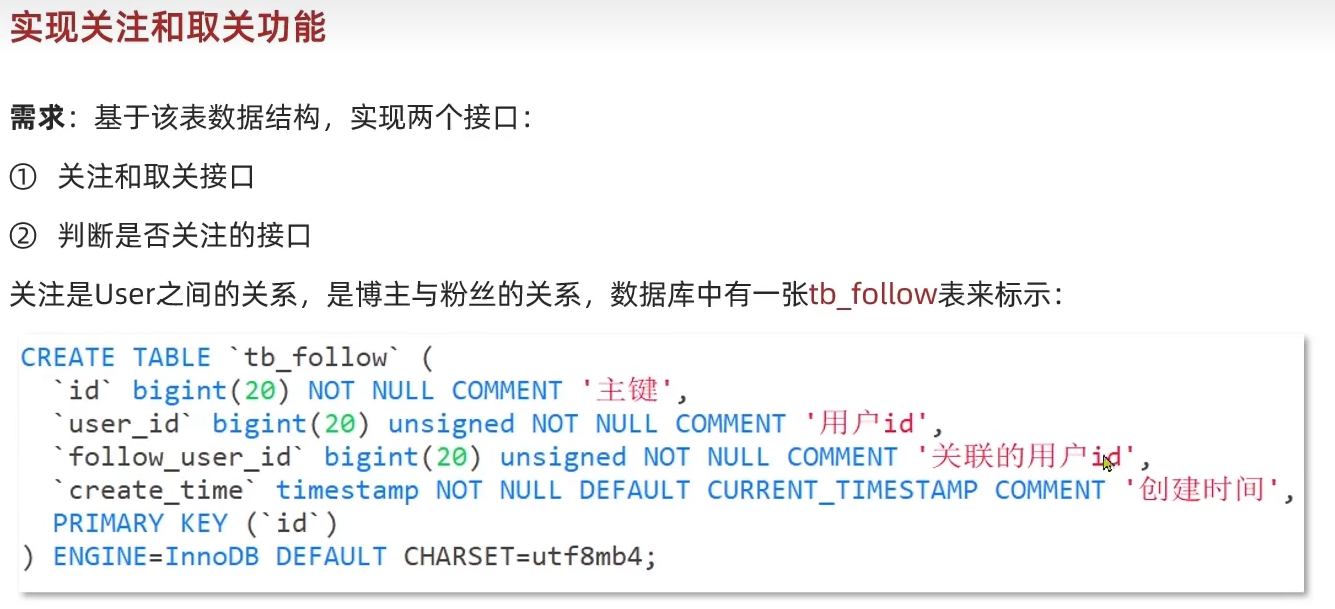
@Override
public Result follow(Long followUserId, Boolean isFollow) {
// 1.获取登录用户
Long userId = UserHolder.getUser().getId();
String key = "follows:" + userId;
// 1.判断到底是关注还是取关
if (isFollow) {
// 2.关注,新增数据
Follow follow = new Follow();
follow.setUserId(userId);
follow.setFollowUserId(followUserId);
boolean isSuccess = save(follow);
if (isSuccess) {
// 把关注用户的id,放入redis的set集合 sadd userId followerUserId
stringRedisTemplate.opsForSet().add(key, followUserId.toString());
}
} else {
// 3.取关,删除 delete from tb_follow where user_id = ? and follow_user_id = ?
boolean isSuccess = remove(new QueryWrapper<Follow>()
.eq("user_id", userId).eq("follow_user_id", followUserId));
if (isSuccess) {
// 把关注用户的id从Redis集合中移除
stringRedisTemplate.opsForSet().remove(key, followUserId.toString());
}
}
return Result.ok();
}将数据存入Redis中,使用Redis的set类型,key为"follows:"+当前登录用户id,value为要关注的用户ID
关注功能
public Result followCommons(Long id) {
// 1.获取当前用户
Long userId = UserHolder.getUser().getId();
String key = "follows:" + userId;
// 2.求交集
String key2 = "follows:" + id;
Set<String> intersect = stringRedisTemplate.opsForSet().intersect(key, key2);
if (intersect == null || intersect.isEmpty()) {
// 无交集
return Result.ok(Collections.emptyList());
}
// 3.解析id集合
List<Long> ids = intersect.stream().map(Long::valueOf).collect(Collectors.toList());
// 4.查询用户
List<UserDTO> users = userService.listByIds(ids)
.stream()
.map(user -> BeanUtil.copyProperties(user, UserDTO.class))
.collect(Collectors.toList());
return Result.ok(users);
}使用Redis的set类型,取两个key的交集
关注推送
关注推送也叫做Feed流,直译为投喂。为用户持续的提供“沉浸式"的体验,通过无限下拉刷新获取新的信息。
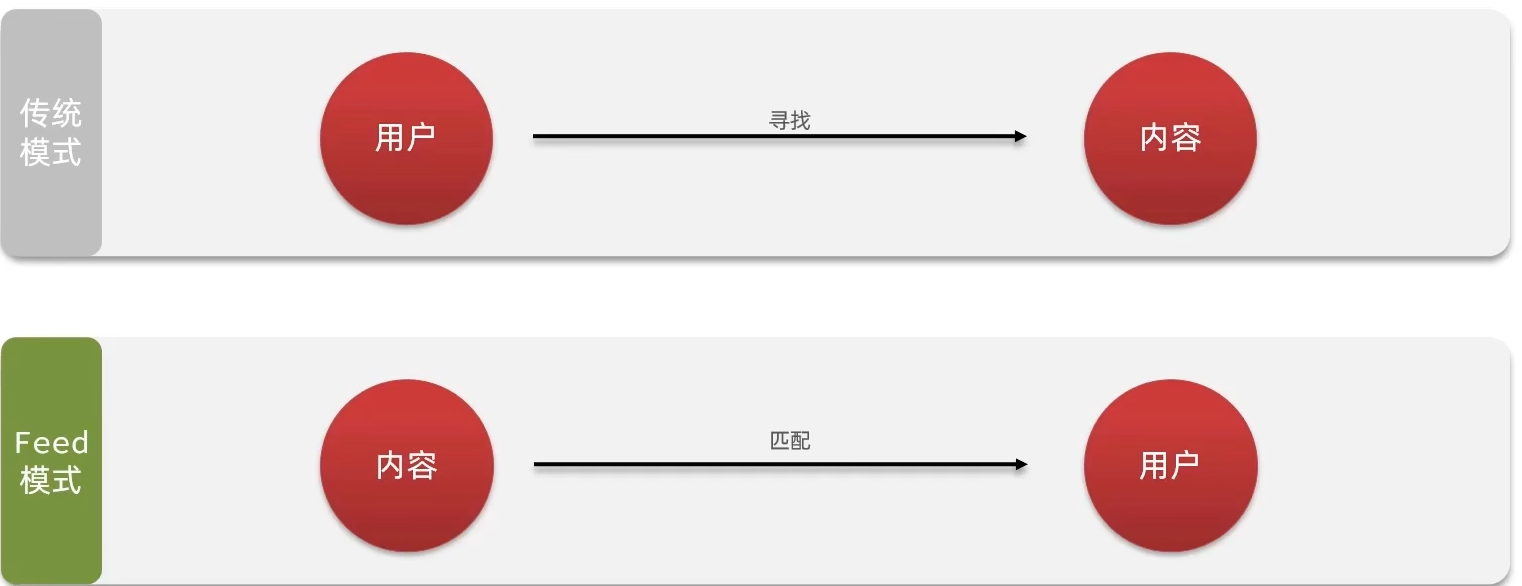
Feed流的模式
Feed流产品有两种常见模式:
●Timeline: 不做内容筛选,简单的按照内容发布时间排序,常用于好友或关注。例如朋友圈
➢优点:信息全面,不会有缺失。并且实现也相对简单
➢缺点:信息噪音较多,用户不一定感兴趣,内容获取效率低
本例中的个人页面,是基于关注的好友来做Feed流,因此采用Timeline的模式。该模式的实现方案有三种:
①拉模式

优点:节省存储空间
缺点:延迟性较高
②推模式
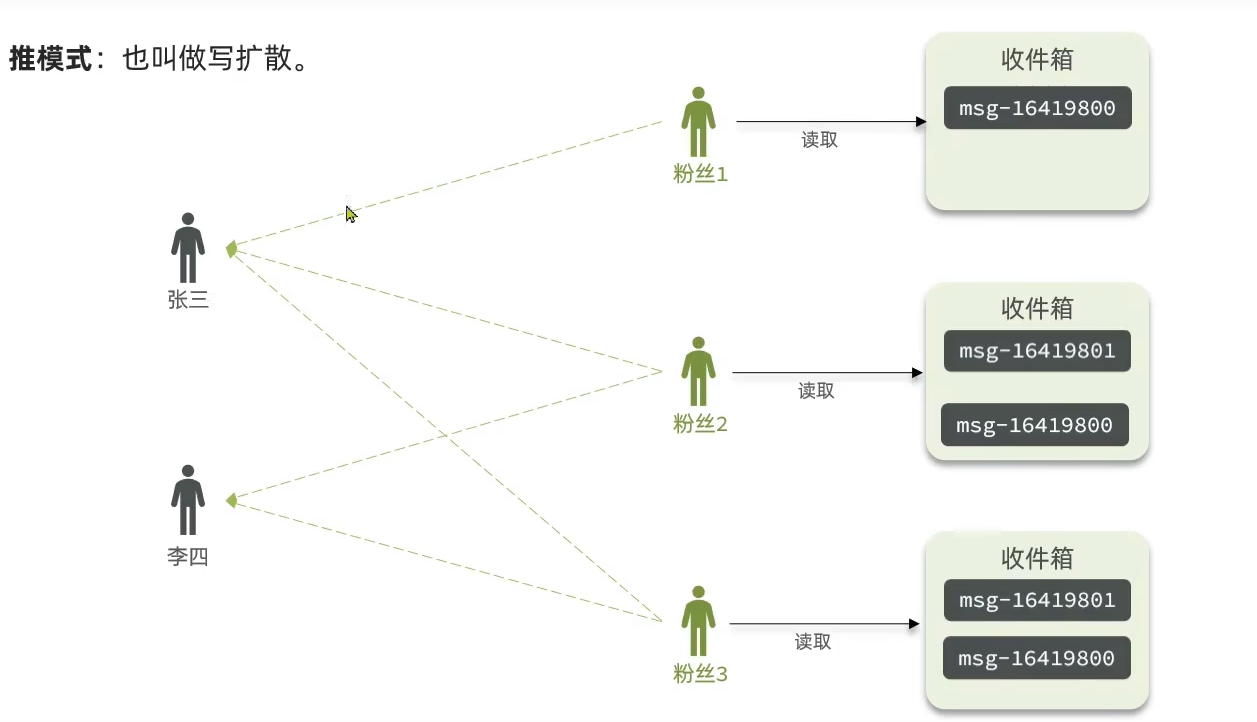
③推拉结合
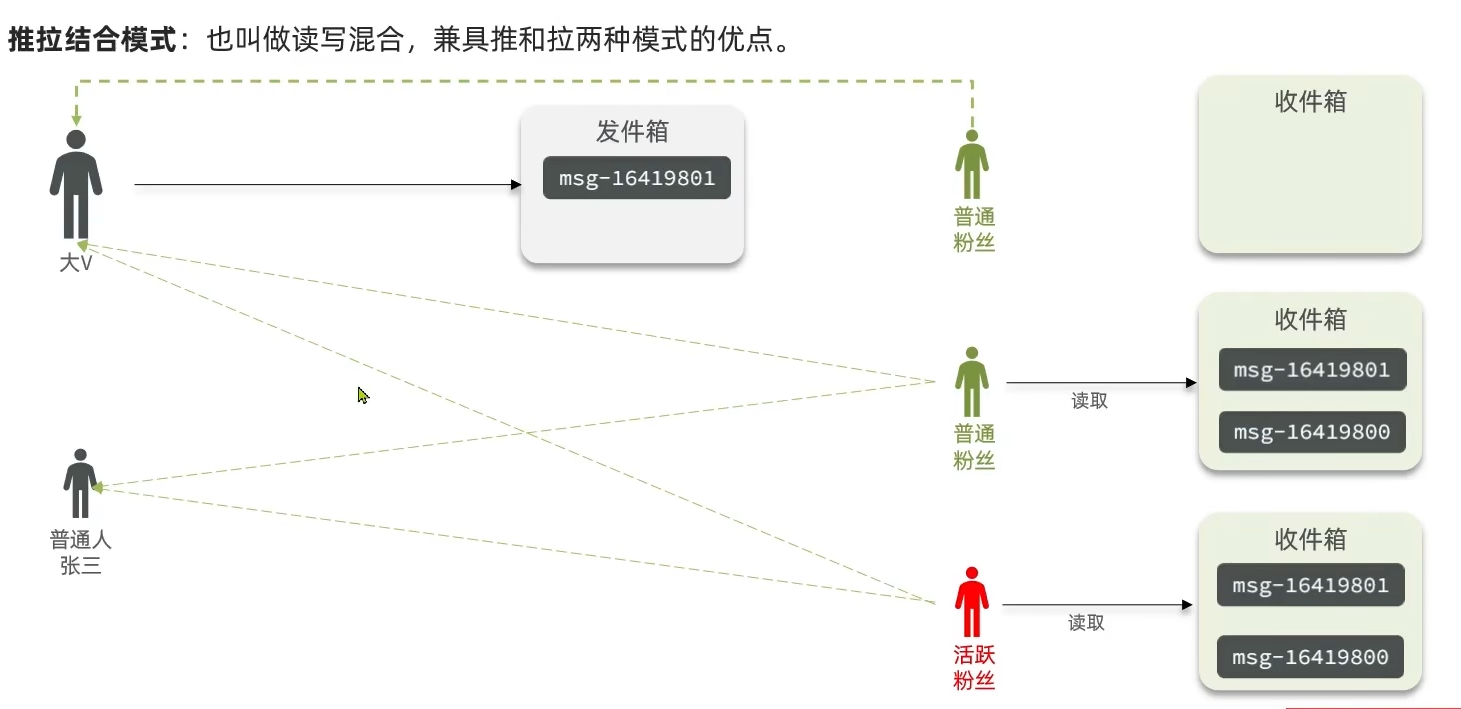
总结:
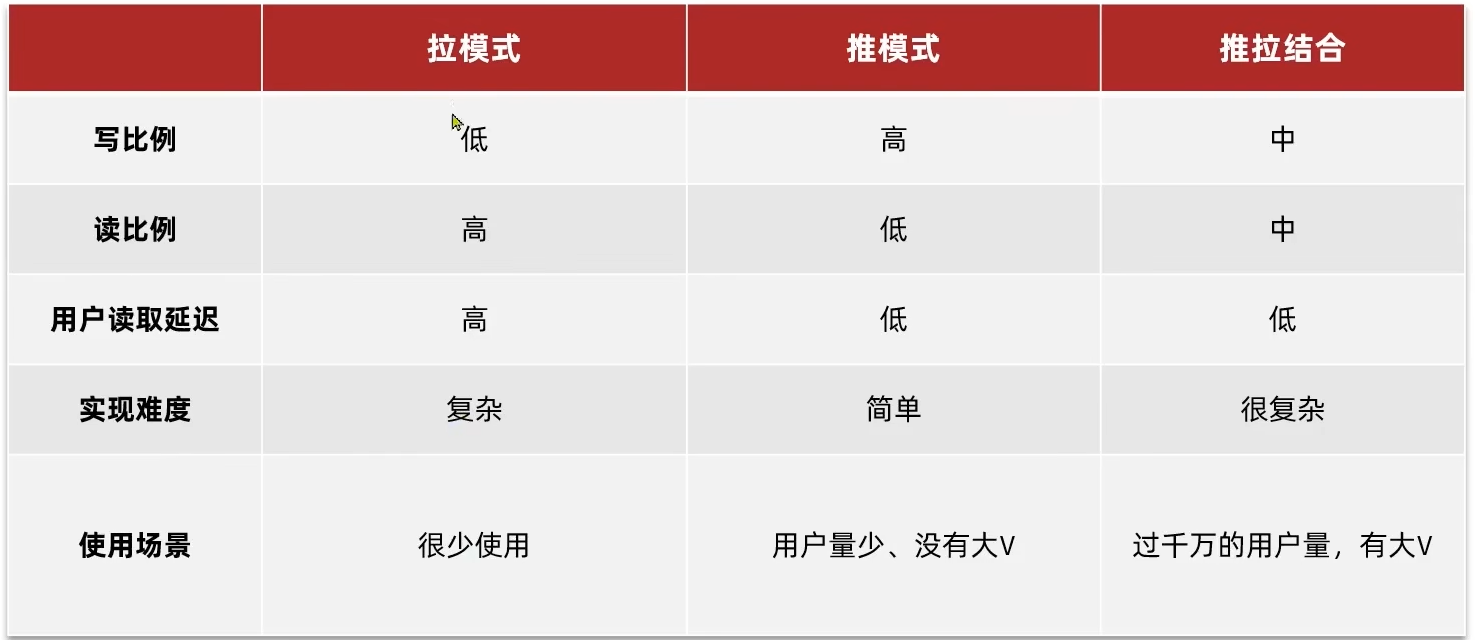
●智能排序:利用智能算法屏蔽掉违规的、用户不感兴趣的内容。推送用户感兴趣信息来吸引用户
➢优点:投喂用户感兴趣信息,用户粘度很高,容易沉迷
➢缺点:如果算法不精准,可能起到反作用

Feed流分页问题
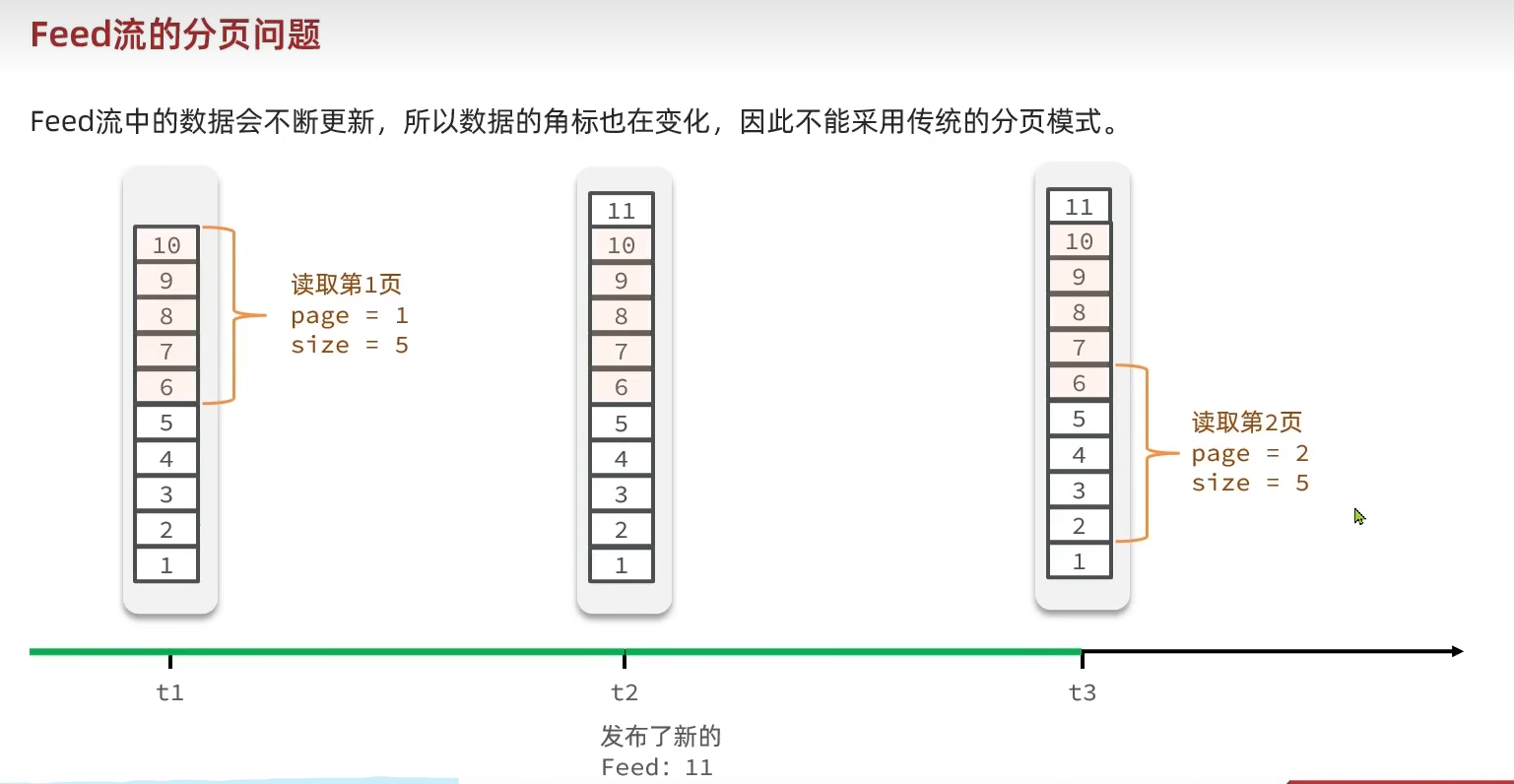
代码实现->新增博客:
public Result saveBlog(Blog blog) {
// 1.获取登录用户
UserDTO user = UserHolder.getUser();
blog.setUserId(user.getId());
// 2.保存探店笔记
boolean isSuccess = save(blog);
if(!isSuccess){
return Result.fail("新增笔记失败!");
}
// 3.查询笔记作者的所有粉丝 select * from tb_follow where follow_user_id = ?
List<Follow> follows = followService.query().eq("follow_user_id", user.getId()).list();
// 4.推送笔记id给所有粉丝
for (Follow follow : follows) {
// 4.1.获取粉丝id
Long userId = follow.getUserId();
// 4.2.推送
String key = FEED_KEY + userId;
stringRedisTemplate.opsForZSet().add(key, blog.getId().toString(), System.currentTimeMillis());
}
// 5.返回id
return Result.ok(blog.getId());
}使用Redis的zset类型实现分页
实现思路:
第一次查询是前端传入当前时间,从Redis中取出2个博客id,在根据博客id查询博客详细数据,并将偏移量offset和博客发布的最小时间,返回前端。但用户查询下一页时,前端将上次返回的最小时间和偏移量offset返回给后端,获取博客数据。
注意:zset类型的偏移量是从0开始的,0代表这篇博客本身,1代表不包含这篇博客本身,所以下面代码中的offset默认为1
/**
max为发布博客的时间戳
offset为偏移量
*/
public Result queryBlogOfFollow(Long max, Integer offset) {
// 1.获取当前用户
Long userId = UserHolder.getUser().getId();
// 2.查询收件箱 ZREVRANGEBYSCORE key Max Min LIMIT offset count
String key = FEED_KEY + userId;
Set<ZSetOperations.TypedTuple<String>> typedTuples = stringRedisTemplate.opsForZSet()
.reverseRangeByScoreWithScores(key, 0, max, offset, 2);
// 3.非空判断
if (typedTuples == null || typedTuples.isEmpty()) {
return Result.ok();
}
// 4.解析数据:blogId、minTime(时间戳)、offset
List<Long> ids = new ArrayList<>(typedTuples.size());
long minTime = 0; // 2
int os = 1; // 2
for (ZSetOperations.TypedTuple<String> tuple : typedTuples) { // 5 4 4 2 2
// 4.1.获取id
ids.add(Long.valueOf(tuple.getValue()));
// 4.2.获取分数(时间戳)
long time = tuple.getScore().longValue();
if(time == minTime){
os++;
}else{
minTime = time;
os = 1;
}
}
// 5.根据id查询blog
String idStr = StrUtil.join(",", ids);
List<Blog> blogs = query().in("id", ids).last("ORDER BY FIELD(id," + idStr + ")").list();
for (Blog blog : blogs) {
// 5.1.查询blog有关的用户
queryBlogUser(blog);
// 5.2.查询blog是否被点赞
isBlogLiked(blog);
}
// 6.封装并返回
ScrollResult r = new ScrollResult();
r.setList(blogs);
r.setOffset(os);
r.setMinTime(minTime);
return Result.ok(r);
}核心代码详解:
Set<ZSetOperations.TypedTuple<String>> typedTuples = stringRedisTemplate.opsForZSet()
.reverseRangeByScoreWithScores(key, 0, max, offset, 2);这段代码是使用 Spring Data Redis 操作 Redis 中的有序集合(ZSet)数据结构。具体来说,它使用了 opsForZSet() 方法获取一个 ZSetOperations 对象,然后调用该对象的 reverseRangeByScoreWithScores() 方法来获取指定分数范围内的有序集合成员,并按照分数从高到低进行排序。
参数解释如下:
- key:指定要操作的有序集合的键名。
- 0:指定分数范围的最小值,这里设为 0,表示从分数为 0 的成员开始。
- max:指定分数范围的最大值,根据实际需求进行设置。
- offset:指定结果集的起始偏移量,表示从第几个成员开始返回结果。
- 2:指定返回结果的数量,表示最多返回两个成员的信息。
返回结果是一个 Set<ZSetOperations.TypedTuple<String>> 类型的集合,其中 TypedTuple 是 Spring Data Redis 提供的一个泛型接口,用于表示有序集合中的成员和对应的分数。在这个集合中,每个元素都包含一个成员和它的分数。
需要注意的问题:
Redis的zset类型中的score可能会出现相同的情况,如果相同则需要获取相同发布博客的条数作为offset
